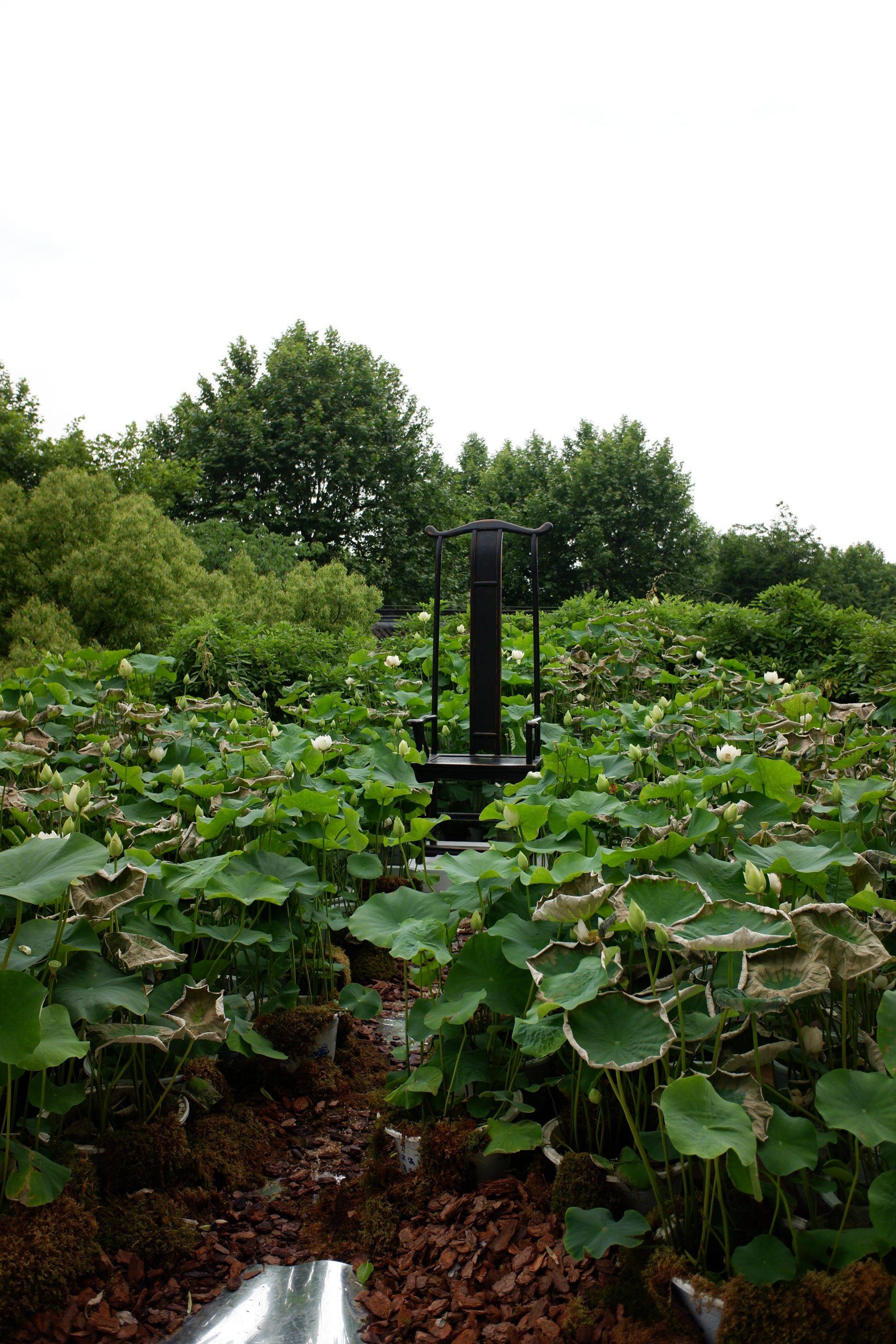AMBELIE presents 'The Direction of Time,' an exhibition located at the historic Wang Zhuang on Hangzhou's Xizi Lake. This project reimagines the elegant, dual-styled residence as a unique setting for a curated collection of furniture masterpieces.
From iconic modern designs to exquisite lacquer screens, it invites viewers to explore the rich interplay of past and present, utility and art.
In October last year, we took the Somekh Building on the Bund in Shanghai as our starting point. We reorganised the AMBELIE collection of Chinese designer furniture into a 'mobile feast', constantly searching for a habitat that matches our aesthetic tendencies and creates a connection between the old and the new in a different time and space. Leaving the bustling city behind, we have moved the exhibition to the city of Hangzhou, to our former residence "Wang Zhuang" on the shores of Xizi Lake, where the greenery is like a pile of green, weaving a dream of hidden but real life - a double-storeyed brick building hidden in the lush trees, with moss streaks. The double-storey brick building, with mossy traces and grasses, has a unique oriental and refreshing colour palette; the façade columns are in the Ionic style of European classicism, solemn and stately vaulted roof supports the semi-open building space and a clear spring in the courtyard.
In keeping with the function of the 'house', we have made it 'AMBELIE's home', selecting a collection of furniture from the past and the present, restoring the corridor, living room and dining room to their original state of living - at the entrance, Danish designer Jørgen Høvelsk has created a new space for the house. Jørgen Høvelskov's 'Harp Chair', with its stringed back and linear tension like the strings of a lute, and its crossed wooden frame forming the high prow of a Viking battleship;
The sculptural beauty of the slender Golem high-backed chair, and the steel crystal table by Swiss architect and designer Mario Botta Tesi 609, the severe but playful Brobon Dining Chair with its screens and porcelain, creates an East-meets-West dining space;
In the living room, the Hyaline chaise longue, a Space Age classic, gives the area a sense of fun and futurism, and the floor lamp by the legendary architect Frank Lloyd Wright introduces the living room to a natural and naturalistic atmosphere. The floor lamp by the legendary architect Frank Lloyd Wright introduces the living room to a natural, warm, horizontal and horizontal realm.
The exhibition title is from Neruda's poem 'The Heights of Machu Picchu', Machu Picchu, an ancient mountain range and pre-Columbian Inca relic, and 'The Direction of Time' is taken from the last line of the ninth stanza. "From space to space, as if in a hollow web, I walk in the middle of the streets and the environment, coming and going ......" we are also fascinated by the modern design of the last century, which shines with the light of human creativity and vitality.
The two lacquer screens take the viewer back to the "Oriental Dream" when the Chinoiserie style was all the rage in Europe. The gilded and inlaid details are set off by the warm and subdued black lacquer wood. Since the Ming Dynasty, Chinese lacquer screens have had a profound and long-lasting impact on Western perceptions of oriental aesthetics through their exquisite carving, painting and inlay techniques and their magnificent beauty. Unfolding a painted screen accomplishes the grandeur of a hall.
In order to showcase the independent aesthetic value of the furniture, we also continue the idea of the Somekh exhibition, presenting the most stylistic masterpieces such as the Anacleto sculptural chair and the interlocking chair designed by Joe Colombo in the form of a gallery on the third floor.
On the top floor, we invited the florist to create a vast lotus pond, a mountainous landscape with water shadows, blue leaves like waves, green lilies on branches, a slight tremor in the breeze between the leaves, a Ming Style Master Chair in the centre, watching a pond of stream visitors, the fragrance of infinite lotus flowers.
We are particularly fond of the stateliness and neatness of classical architecture. Still, we are also fascinated by the modern design of the last century, which shines with the light of human creativity and vitality. Wang’s Mansion is located on Beishan Street, known as the 'museum without walls', and as one of the industrial pavilions of the 1929 West Lake Exposition, it was once a public space to showcase the achievements of social productivity, but also a private residence for the elite of the financial and academic world. It was also a private residence for the economic and intellectual elite. AMBELIE aims to break down the distinction between art and utility, past and present, and to bring to life the treasures that have been sealed in the river of time. We hope that furniture from the Bauhaus, Arts and Crafts, Pop, Post-Modern and Space Age periods will evoke the memories of civilisations here and pay tribute to the old and the new.


